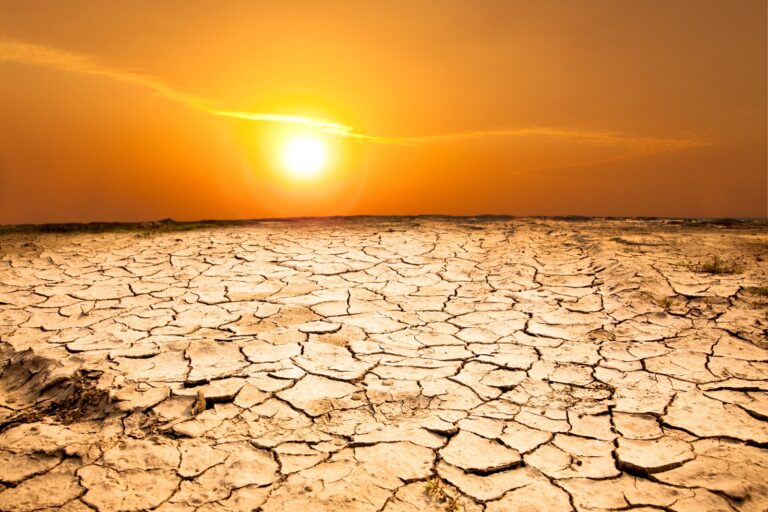Ready or not, the planet has just received a visitor. His name is El Niño (Spanish for “the boy”) and he’ll likely bring a whole bunch of weather mischief starting this winter.
El Niño and La Niña (“the girl”) are opposite extremes of weather conditions occurring every few years across the Equatorial Pacific Ocean, due to natural interactions between the ocean and atmosphere.
During El Niño years, the Pacific gets warmer. This causes more rain in South and Central America and in the United States, while affecting other parts of the world with drought or other unusual weather events.
During La Niña years, such as the past three years, the ocean gets cooler. This causes drier weather in some places and colder, wetter weather in others, including increased hurricanes on the Atlantic coast.

Noting higher sea surface temperatures in the Pacific, the US National Oceanic and Atmospheric Administration (NOAA) predicted El Niño would begin this summer in the Northern Hemisphere. NOAA officially declared its arrival earlier than expected, on June 8.
Just how strongly will El Niño affect areas outside of tropical regions?
And how does this relate to the effects of climate change, which a recent study suggests will cause more and longer extreme heatwaves here in the Eastern Mediterranean region by century’s end?
“It is highly probable that the coming summers will be record-breaking.”
ISRAEL21c got insights from two meteorology experts: Prof. Pinhas Alpert, former head of Tel Aviv University’s Porter School for Environmental Studies; and Nir Stav, executive director of the Israel Meteorological Service.
They agree that although El Niño and climate change are quite separate phenomena, their combined effect will lead to noticeably warmer weather.
The World Meteorological Organization predicts that 2023 to 2027 will almost certainly be the warmest years on record, with a high likelihood of the global average temperature rising 1.5 degrees Celsius above normal for at least one year of this five-year period. One Israeli city, Beersheva, is already launching a preparedness plan for expected heatwaves this summer, including a climate emergency hotline.
Our blue planet

Why do Pacific weather patterns influence global weather?
“We live on a blue planet on which about 80% is ocean, so things that happen on the ocean affect the entire globe,” Stav tells ISRAEL21c.
“When we move from La Niña to El Niño, the quasi-stationary weather patterns in the atmosphere shift in location and intensity. Some places will get more precipitation, some will get drought, some will be cooler and others hotter,” he says.
“In spite of the modeling consensus the El Niño is developing, it is difficult to predict what impacts it will have here in Israel. It is a pity, since we know of such phenomena months in advance,” he adds.
“If I were sure El Niño would give a lot of rain in Israel, then I could already say now, ‘Guys, this is going to be a very rainy year.’
“But that is just wishful thinking because the correlations to these climate oscillations are not seen in all places,” Stav explains.
“Yet we do know that the climate system is experiencing a gradual trend of warming and it is highly probable that the coming summers will be record-breaking. Thus, there is a big effort in the government to be prepared for heatwaves – not necessarily because of El Niño.”
While some scientists think El Niño and La Niña will get more intense due to climate change, Stav believes “we probably don’t have enough good climate models to give a definitive prediction. There is ongoing research to try and improve the modeling of the complicated interactions between the atmosphere and the oceans.”
Climate change more troubling
Alpert says global warming is the much bigger concern.

El Niño and La Niña, he points out, are natural oscillations that have been raising and lowering ocean temps for millennia.
According to NOAA, they affect surface temperatures only by about 0.1 degree Celsius, mostly in tropical regions near the Equatorial Pacific.
“El Niño and La Niña are not as great a threat to mankind as global warming, which is a manmade phenomenon affecting the whole world, caused by greenhouse gases in the atmosphere that started in the industrial revolution about 200 years ago,” Alpert says.
NASA reports that the average global temperature on Earth has increased by at least 1.1 degrees Celsius (1.9F) since 1880, and most of this warming has happened since 1975.
“One piece of evidence that global warming is much more significant and worrisome compared to El Niño and La Niña is that over the last three years we’ve had La Niña conditions – which should mean cooler temperatures. But because of global warming we’ve had a continuous, steady increase,” Alpert tells ISRAEL21c.
In fact, he says, average global temperatures in these three La Niña years were even warmer than in the El Niño years just a couple of decades ago.
With warmer and drier weather likely, ISRAEL21c will continue spotlighting the role of Israeli innovation in reducing greenhouse gas emissions and implementing sustainable sources of electricity for indoor cooling and water desalination.
















